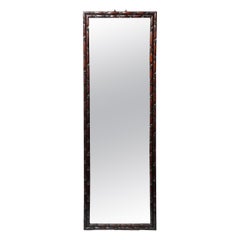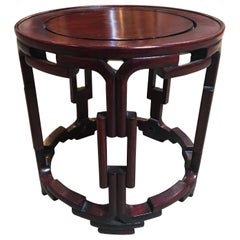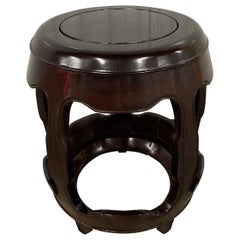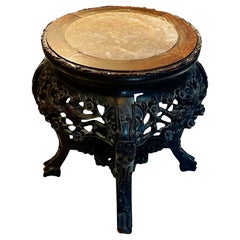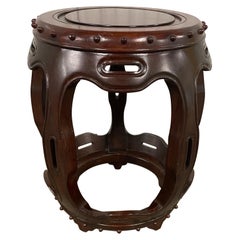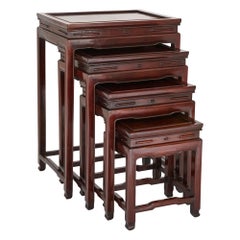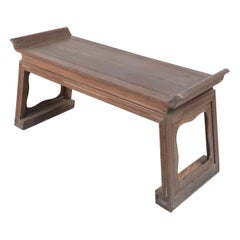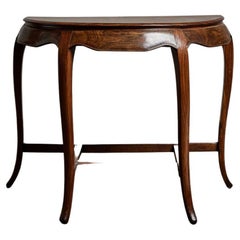Chinese Rosewood Furniture
20th Century Chinese Wall Mirrors
Glass, Rosewood
Mid-20th Century Chinese More Asian Art, Objects and Furniture
Rosewood
20th Century Chinese Furniture
Rosewood
Antique Early 1900s Chinese Side Tables
Marble
20th Century Chinese Furniture
Rosewood
Early 20th Century Chinese Chinese Export Nesting Tables and Stacking Ta...
Rosewood
20th Century Chinese Export Planters and Jardinieres
Wood, Rosewood
Antique 19th Century Chinese Chinese Export Coffee and Cocktail Tables
Wood, Rosewood
Antique 1880s Chinese Qing Furniture
Rosewood
Vintage 1920s Chinese Chinoiserie End Tables
Rosewood
20th Century Chinese Qing Tray Tables
Rosewood
Vintage 1960s Chinese Export Armchairs
Rosewood
Antique 19th Century Chinese Vitrines
Glass, Rosewood
20th Century Chinese Chinese Export Chairs
Rosewood
Mid-20th Century Chinese Sculptures and Carvings
Rosewood
Late 20th Century Chinese Chinese Export Side Tables
Rosewood
20th Century Chinese Furniture
Rosewood
Antique Mid-19th Century Chinese Pedestals
Rosewood
Antique Late 19th Century Chinese Sculptures and Carvings
Rosewood
Antique 19th Century Chinese Export Panelling
Brass
Late 20th Century Chinese Chinese Export Pedestals
Rosewood
20th Century Chinese Chinese Export Pedestals
Rosewood
Vintage 1960s Chinese Chinese Export Armchairs
Upholstery, Wood, Rosewood
Antique Late 19th Century Chinese Armchairs
Rosewood
Vintage 1980s Chinese Console Tables
Rosewood
Vintage 1980s Chinese Console Tables
Rosewood
Late 20th Century Chinese Chinese Export Pedestals
Rosewood
20th Century Chinese Qing Furniture
Rosewood
Antique Late 18th Century Chinese Center Tables
Rosewood
Early 20th Century Chinese Sculptures and Carvings
Mid-20th Century Chinese Chinese Export Furniture
Rosewood
Antique 1880s Chinese Chinese Export Side Tables
Marble
Antique Mid-19th Century Chinese Armchairs
Rosewood
Mid-20th Century Chinese Side Tables
Rosewood
20th Century Chinese Chinese Export Console Tables
Rosewood
21st Century and Contemporary American Chinese Export Cabinets
Rosewood
Early 20th Century Chinese Chinese Export Furniture
Rosewood
Vintage 1980s Chinese Side Tables
Rosewood
Mid-20th Century Chinese Export Corner Chairs
Rosewood
Early 20th Century Chinese Ming Patio and Garden Furniture
Rosewood
20th Century Chinese Chinoiserie Side Tables
Marble
Mid-20th Century Chinese Chinese Export Furniture
Rosewood
Mid-20th Century Chinese Chinese Export Furniture
Rosewood
Mid-20th Century Chinese Side Tables
Rosewood
Antique 19th Century Chinese Qing Lanterns
Glass, Rosewood
20th Century Chinese Chinese Chippendale Armchairs
Rosewood
Antique Late 19th Century Chinese Rustic Furniture
Rosewood
Antique 19th Century Chinese Qing Scholar's Objects
Rosewood
Antique Late 19th Century Chinese Qing Wall Mirrors
Mirror, Rosewood
Late 20th Century Chinese Chinese Export Sofas
Upholstery, Wood, Rosewood
Vintage 1970s Chinese Chinoiserie Furniture
Rosewood
20th Century Unknown Armchairs
Wood, Rosewood
Antique Mid-18th Century Chinese Card Tables and Tea Tables
Rosewood
Early 20th Century Chinese Chinese Export Furniture
Rosewood
Early 20th Century Burmese Wall Mirrors
Rosewood
Antique Late 19th Century Chinese Chinese Export Decorative Boxes
Brass
Antique 19th Century Chinese Qing Armchairs
Marble
Mid-20th Century Chinese Chinese Export Furniture
Rosewood
Mid-20th Century Coffee and Cocktail Tables
Rosewood
Early 20th Century Chinese Chinese Export Furniture
Rosewood
- 1
- ...
Chinese Rosewood Furniture For Sale on 1stDibs
How Much is a Chinese Rosewood Furniture?
- Is rosewood a hardwood?1 Answer1stDibs ExpertApril 5, 2022Yes, rosewood is hardwood. It is the preferred wood used for traditional Chinese furniture but is currently endangered and logging is banned. Illegal rosewood logging has caused huge problems in the region where it grows (Madagascar) and throughout the world, with devastating results. Shop a collection of antique rosewood furniture from some of the world’s top sellers on 1stDibs.
- What is Chinese rosewood?1 Answer
 Lotus GallerySeptember 23, 2020
Lotus GallerySeptember 23, 2020Chinese rosewood, known as hongmu (红木), is a general term used for a variety of tropical fine grained fragrant hardwoods of deep reddish brown color that is prized for furniture making.
 PAGODA REDOctober 7, 2020
PAGODA REDOctober 7, 2020Known in China as huali, rosewood is considered the finest hardwood and is prominently seen in luxury furniture from the Ming and early Qing dynasties. The exotic wood was favored for its durability, rich coloring, and distinctive grain. It is as collectible now as it was then.
- 1stDibs ExpertJune 15, 2023To care for Chinese lacquered furniture, wipe it with a damp cloth regularly. You can use a paste wax intended for use on lacquer finishes to restore shine, but avoid using harsh furniture polishes and cleaners on pieces. On 1stDibs, shop a range of lacquered furniture.
- 1stDibs ExpertApril 5, 2022Chinese-style furniture is usually called Chinoiserie. The term indicates furniture and decorative objects produced in Europe and North America that borrow design elements from pieces made in China and other East Asian countries. On 1stDibs, find a collection of Chinoiserie.
- 1stDibs ExpertNovember 4, 2024To identify antique Chinese furniture, look carefully at its details. Chinese craftsmen often built furniture using mortise and tenon joinery, eliminating the need for nails and screws. If you see this type of hardware, your piece is likely not at least 100 years old, especially if the hardware still looks new and shiny. Since antique furniture was handmade, you will normally see slight imperfections, such as tool marks or slight variations in carvings. Pieces that appear completely uniform and pristine are less often genuine antiques.
When present, maker's marks can also be helpful. Research the marks to learn more about when the maker was active and producing pieces like yours. Alternatively, you can have a certified appraiser or experienced antique dealer evaluate your furniture for you.
Shop an assortment of antique Chinese furniture.  PAGODA REDOctober 7, 2020
PAGODA REDOctober 7, 2020To determine the age of a Chinese furniture piece, look carefully at the joinery and finish. Natural expansion and contraction of the wood over time will cause a joint to protrude or retract, distorting a once-seamless fit. Antique lacquer finishes become crackled and worn over time. Areas of exposed wood, such as the underside of a table, the footrest of a chair, or the back of a cabinet should appear raw and dry compared to the finished surface. With use, the legs of tables and chairs become weathered near the bottom from precipitation and use.
